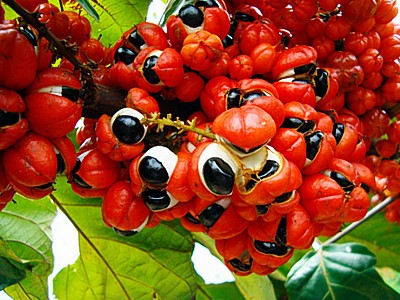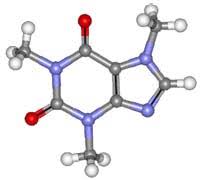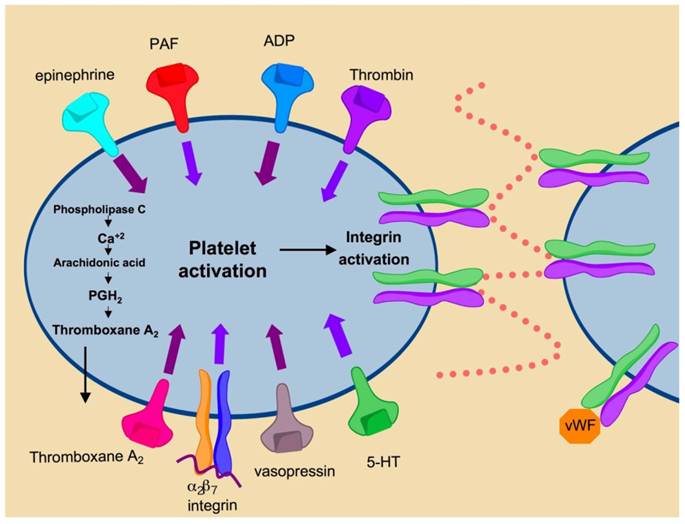INTRODUCTION
The plant Guaranà or Paullinia cupana, a climbing plant in the maple family, Sapindaceae, native to the Amazon basin and especially common in Brazil, is rich in methylxanthines such as guaranine (defined as only the caffeine chemical in guarana), theobromine and theophylline, and contains tannins, saponins, catechins, epicatechins, proanthocyanidols, as well as trace concentrations of many other compounds.
During the last two decades, guaraná has emerged as a key ingredient in various ‘sports’ and energy drinks which have increased in popularity with adolescents and young adults. Caffeine, the most physiologically active ingredient in energy drinks, is generally considered safe by the US Food and Drug Administration (FDA), although adverse effects can occur at varying amounts. Guaraná too is recognized safe by the FDA. There have been medicinal beverages using extracts of roasted guaraná seeds available since the pre‐Colombian era (Smith and Atroch, 2010).
Previous studies in experimental models as well as in vitro assays have described several biological effects that guaraná has in prevention of cardiovascular disease, such as antioxidant activity, positively effects on lipid metabolism, weight loss, platelet aggregation inibition. Furthermore guaranà shows many other activities as antimicrobial effects (Da Fonseca et al., 1994), anticarcinogenic and antitumoral properties (Fukumasu et al., 2008), improvement in cognitive performance (Espinola et al., 1997; Kennedy et al., 2004) and antidepressive effect (Campos et al., 2005; Otobone et al., 2007).

 Guaranine
Guaranine
Paullinia Cupana
| Chemical composition of Guarana seeds: |
|
| Vegetable fiber | 49.125 % |
| Reddish resin | 8.800 % |
| Starch | 8.350 % |
| Water | 7.650 % |
| Pectin, malic acid, mucilage, dextrin, salts | 7.470 % |
| Guarana-tannic acid | 5.902 % |
| Caffeine/Guaranine | 5.388 % |
| Yellowish steady oil | 2.950 % |
| Pyro-guarana acid | 2.750 % |
| Reddish colorant | 1.520 % |
| Amorphous substances | 0.606 % |
| Saponin | 0.060 % |
WEIGHT LOSS
The principal finding of this study was that an herbal preparation with Ma Huang and Guarana as the main active ingredients, administered with diet and exercise counseling, promoted significant loss of body weight and fat in overweight subjects, men and women, beyond that observed in similarly counseled placebo-treated subjects. The weight loss and additional beneficial responses, included anthropometric, metabolic and cardiovascular changes, observed in actively treated subjects were accompanied by stimulatory effects characteristic of ephedrine and caffeine. Ephedrine and caffeine combinations promote weight loss by reducing food intake as well as by increasing thermogenesis. Ephedrine's thermogenic activity has also been observed in isolated rat brown adipocytes where it mimics norepinephrine b-adrenergic effects. The effect of methylxantines, such as caffeine, to potentiate the thermogenic effect of ephedrine is thought to be due to reduced negative feedback inhibition mechanisms that suppress catecholamine release. These include activation of presynaptic a-2 adrenoreceptors, release of prostaglandins and adenosine into synaptic junctions, and increased activity of cellular phosphodiesterase enzyme, which would increase degradation of cyclic AMP. The adverse effect reported most frequent by the subjects in treatment were dry mouth, insomnia and headache.
An herbal supplement containing Ma Huang-Guarana for weight loss: a randomized, double-blind trial. Boozer CN, Nasser JA, Heymsfield SB, Wang V, Chen G, Solomon JL..


LDL LEVEL AND ANTIOXIDANT ACTIVITY
A recent study has demonstrated that elderly patients, who habitually ingest Guaranà, have A recent study has demonstrated that elderly patients, who habitually ingest Guaranà, have lower LDL oxidation than patients who never ingested Guaranà, independently from other variables. Also, Guaraná demonstrated a high antioxidant activity in vitro, mainly at concentrations of 1 and 5 μg/mL, evidenced by suppression of conjugated dienes and thiobarbituric acid reactive substances assay productions, tryptophan destruction and high total radical-trapping antioxidant potential.
The effects of guaraná on LDL and serum oxidation are probably associated with some bioactive compounds (catechins and xantines) that are similar to those found in other foods, such as green tea. These compounds have antioxidative, anti-thrombogenic, anti-inflammatory, hypotensive, hypocholesterolemic, antihypertensive, and antiobesogenic effects. The antioxidant effects of Guaraná extract might be due to methylxanthines, such as caffeine, theobromine, and theophylline.
Guaraná (Paullinia cupana Kunth) effects on LDL oxidation in elderly people: an in vitro and in vivo study. Portella Rde L, Barcelos RP, da Rosa EJ, Ribeiro EE, da Cruz IB, Suleiman L, Soares FA..

ANTIPLATELET AGGREGATION ACTIVITY
This activity has been shown for both aqueous extracts and extract derived from dried seeds of Guaranà and seems to be due to different actions and different components.
An active fraction of extract derived from dried seed containing this activity was purified and analyzed by high-performance liquid chromatography/mass spectrometry (HPLC/MS) techniques. It was noted that this fraction contains cathechins, epicatechins, and their dimers, with a small amount of caffeine. It is suggested that complexes containing caffeine and catechins (and their dimers) might be responsible for anti-platelet aggregatory activity in guarana seeds.
Studies on the nature of anti-platelet aggregatory factors in the seeds of the Amazonian Herb Guarana (Paullinia cupana). Subbiah MT, Yunker R..
It’s demonstrated that also an aqueous extracts have anti-aggregatory and de-aggregatory actions, in humans and in rabbit, on platelet aggregation induced by ADP or arachidonate but not by collagen. The active material was shown to be water soluble and heat resistant and appeared to be different from salicylates, nicotinic acid or known xanthines. The antiplatelet activity is present in rabbits following either intravenous or oral administration.
A novel property of an aqueous guaraná extract (Paullinia cupana): inhibition of platelet aggregation in vitro and in vivo. Bydlowski SP, Yunker RL, Subbiah MT..
Another posterior study shows that an aqueous extract (100 mg/ml) and fractions examined separated by TLC decreased platelet aggregation and platelet thromboxane formation from [14C]-arachidonic acid and this activity could be responsible, at least in part, for the antiaggregatory action of guaraná.
An aqueous extract of guaraná (Paullinia cupana) decreases platelet thromboxane synthesis. Bydlowski SP, D'Amico EA, Chamone DA..


CONCLUSIONS
Healthy life style and balanced diet are the first therapeutic measure to reduce the cardiovascular risk: from our research appears that supplements of Guarana could be useful in preventing cardiovascular disease, without significant collateral effects, at low doses.
Enzo Catena
Francesca Troiano